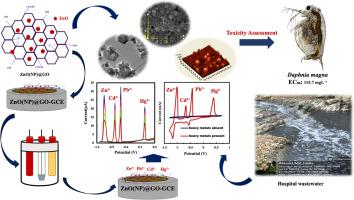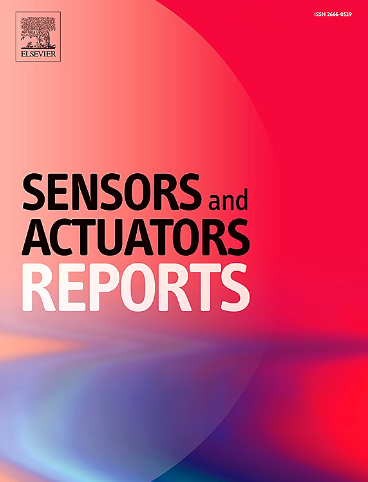Highly efficient and toxicologically safe ZnO(NP)@GO nanocomposite in the simultaneous detection of Cd²⁺, Hg²⁺, Pb²⁺, and Zn²⁺ in aqueous medium
IF 7.6
Q1 BIOTECHNOLOGY & APPLIED MICROBIOLOGY
引用次数: 0
Abstract
Miniaturised devices for trace, simultaneous and off-site detection are the need of the hour for protecting public health and the environment at large. Using sustainable and greener approach, the current study explores using Acmella oleracea extract to derive zinc oxide nanoparticles. Further, ZnO incorporates graphene oxide to obtain the nanocomposite material (ZnO(NP)@GO). The thin film electrode using the ZnO(NP)@GO efficiently detects potential heavy metal ions viz., Cd²⁺, Hg²⁺, Pb²⁺, and Zn²⁺ individually and simultaneously at trace level concentrations. The thin film electrode using the ZnO(NP)@GO showed significantly enhanced electroactive surface area and reduced electron transfer resistance compared to the unmodified glassy carbon electrode. The calibration curve for detecting Cd²⁺, Hg²⁺, Pb²⁺, and Zn²⁺ shows the limits of detection of 0.026, 0.03, 0.010 and 0.020 µgL⁻¹, respectively, in their simultaneous detection. The ZnO(NP)@GO thin film electrode possesses good shelf life and stability for repeated detections of these heavy metal toxic ions. Furthermore, the thin film electrode detects simultaneously these ions at trace levels in the hospital effluent waters with real implications. Moreover, the acute toxicity of ZnO(NP)@GO towards D. magna shows an EC50 value of 115.7 mgL⁻¹ after 48 hrs, proving the safety and environmental sustainability of the modified electrode.

高效、毒理学安全的ZnO(NP)@GO纳米复合材料在水介质中同时检测Cd 2 +、Hg 2 +、Pb 2 +和Zn 2 +
用于痕量、同时和非现场检测的小型化设备是保护公众健康和整个环境的时代需要。利用可持续和更环保的方法,目前的研究探索了使用马鞭草提取物来获得氧化锌纳米颗粒。此外,ZnO与氧化石墨烯结合得到纳米复合材料(ZnO(NP)@GO)。使用ZnO(NP)@GO的薄膜电极有效地检测潜在的重金属离子,即Cd 2 +、Hg 2 +、Pb 2 +和Zn 2 +分别在痕量浓度下同时检测。与未修饰的玻碳电极相比,ZnO(NP)@GO薄膜电极的电活性表面积显著增加,电子转移电阻显著降低。Cd 2 +、Hg 2 +、Pb 2 +和Zn 2 +同时检测的检出限分别为0.026、0.03、0.010和0.020µgL⁻¹。ZnO(NP)@GO薄膜电极具有良好的保质期和稳定性,可用于重复检测这些重金属有毒离子。此外,薄膜电极同时检测这些离子在痕量水平的医院污水具有实际意义。此外,ZnO(NP)@GO对D. magna的急性毒性在48小时后的EC50值为115.7 mg - 1,证明了修饰电极的安全性和环境可持续性。
本文章由计算机程序翻译,如有差异,请以英文原文为准。
求助全文
约1分钟内获得全文
求助全文
来源期刊

Sensors and Actuators Reports
Multiple-
CiteScore
9.60
自引率
0.00%
发文量
60
审稿时长
49 days
期刊介绍:
Sensors and Actuators Reports is a peer-reviewed open access journal launched out from the Sensors and Actuators journal family. Sensors and Actuators Reports is dedicated to publishing new and original works in the field of all type of sensors and actuators, including bio-, chemical-, physical-, and nano- sensors and actuators, which demonstrates significant progress beyond the current state of the art. The journal regularly publishes original research papers, reviews, and short communications.
For research papers and short communications, the journal aims to publish the new and original work supported by experimental results and as such purely theoretical works are not accepted.
 求助内容:
求助内容: 应助结果提醒方式:
应助结果提醒方式:


